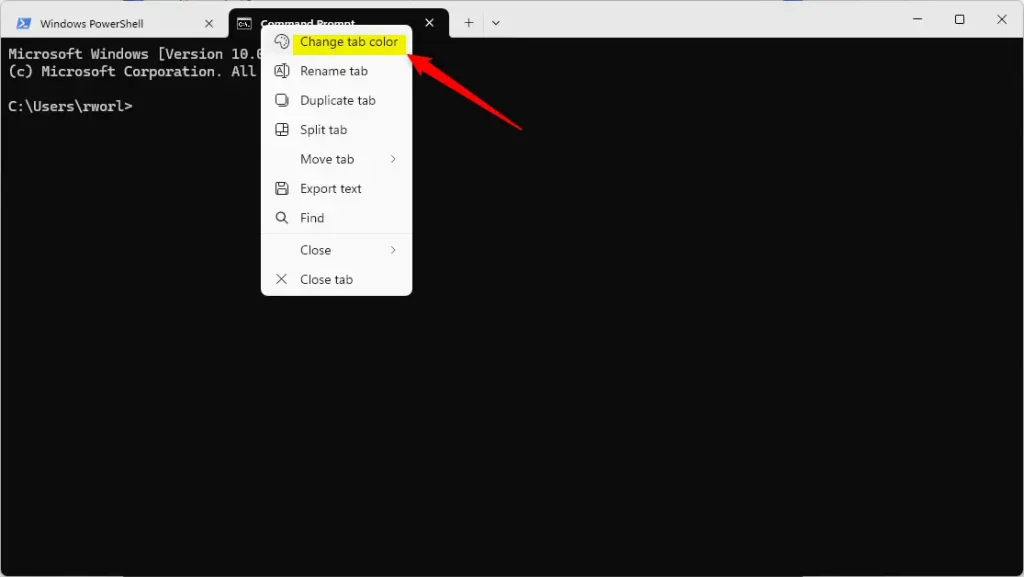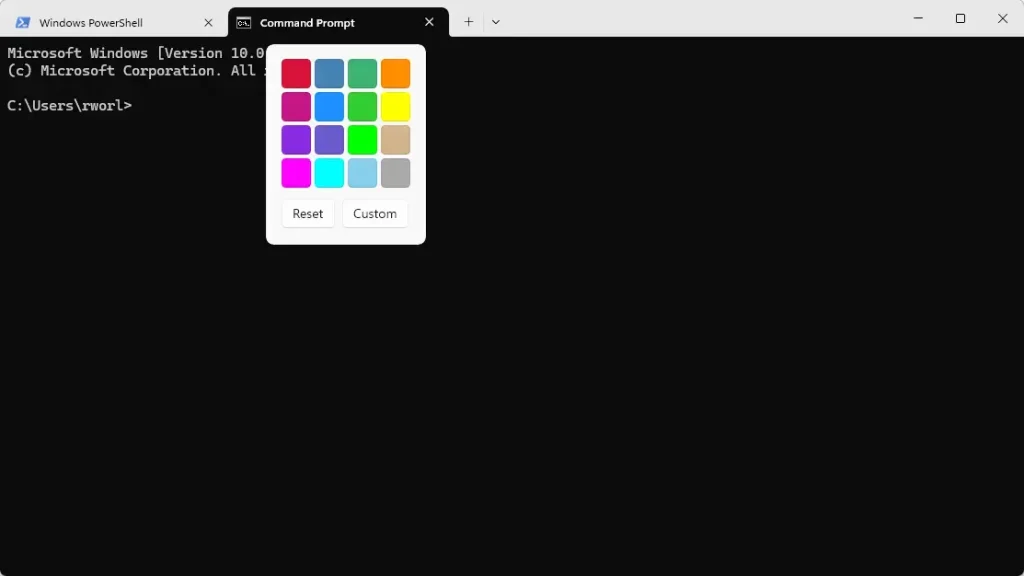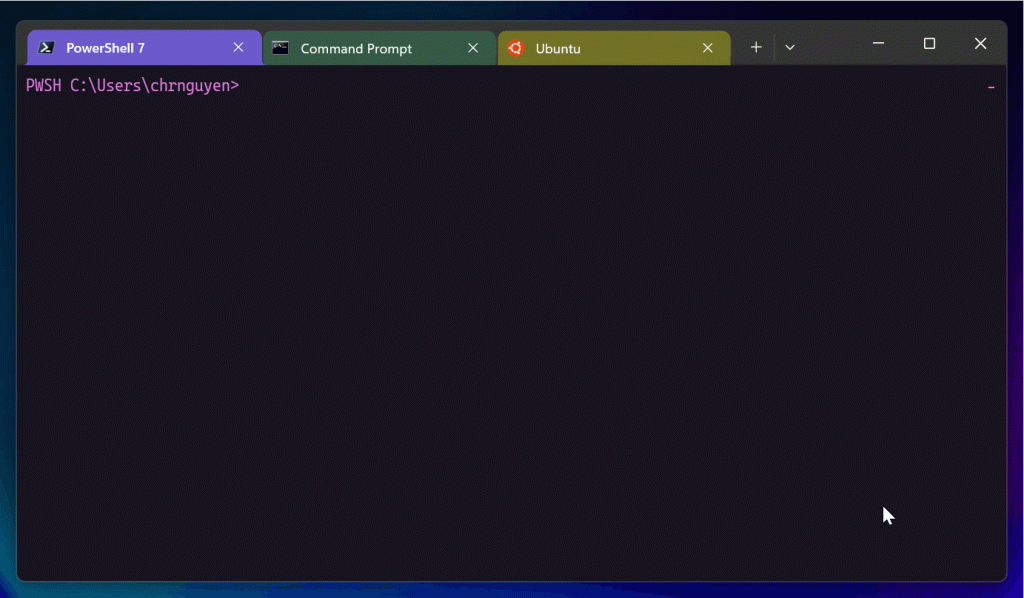This article explains how to change the color tabs in the Windows Terminal app.
Windows Terminal is a modern host application for the command-line shells, including Command Prompt, Windows PowerShell, and bash (via Windows Subsystem for Linux (WSL)).
The Terminal app in Windows allows many settings. You can change the language, adjust the launch size, set the default profile, change the startup behavior, open the admin window, open Terminal automatically at startup, add copy selection to the clipboard automatically, automatically hide the Terminal window, enable admin mode shield, and more.
Beginning with Windows Terminal Preview version 1.23.10353.0, Microsoft added color indicators in the Tab Switch Menu (Ctrl+Tab) for your colored tabs in Windows Terminal.
The indicator will not be shown in the Tab Switch Menu if a tab has the default background color.
Change Windows Terminal tab color
As mentioned, you can change the tab color in the Windows Terminal app.
Here’s how to do it.
First, open the Windows Terminal app.
You can do that by clicking on the Start menu and searching for Terminal. Then, under “Best match,” select and open the Windows Terminal app.

When the Terminal app opens, right-click on the tab you want to change the color of and select Change tab color.

Then, select the color you want the tab to represent.
Follow the steps below to select one of the standard color palettes or use a custom color for your tabs.
- Select a color you want to apply to the tab.
- Click Reset to restore the default background color of the tab.
- Click Custom, select a color in the color picker, and click OK.
- Click on Custom again to close the custom color picker.
- Click Custom, enter the color’s RGB, HSV, or hex #, and click OK.
- Click Custom again to close the custom color picker.

Color tabs should appear for each tabs.

That should do it!
Reference:
Conclusion:
- Changing tab colors in Windows Terminal enhances personalization and organization.
- The process is straightforward, allowing users to select from standard colors or customize their own.
- A clear visual indication of different terminal sessions can improve productivity and ease of navigation.
- Regular updates from Microsoft continue to add functionality and improve user experience in Windows Terminal.
- Explore and experiment with different color palettes to find what works best for your workflow.

Leave a Reply